
In the first week of March, Nikhil S Narayan, a data scientist from Bengaluru made his way to Xi’an, the capital of Shaanxi Province in central China. At the World Artificial Intelligence Symposium where mainly researchers from China and southeast asia presented papers, full time startup employee Narayan was an unlikely emissary.
His paper titled “Siamese Bayesian Networks for AI Based Differential Diagnosis,” proposed a new method to improve the accuracy of artificial intelligence based diagnosis. The authors show that their algorithm has a 40% improvement over manual differential diagnosis of disorders and a 10% improvement over classical artificial intelligence based approaches for diagnosis.
Differential diagnosis the process of differentiating between two or more conditions which share similar signs or symptoms.
The symposium paper didn’t make waves like a recent study from China published in Nature Medicine that used nearly 101 million data points from electronic health records of over 1.3 million patients and showed that artificial intelligence systems can diagnose common childhood diseases better than some doctors. Nevertheless, it marks the beginning of a trend which at its best will ease the load on India’s overburdened healthcare system in an optimists version of the future.
“Now we have close to 1200 diseases trained in the system to take to a conclusion in excess of 85% accuracy diagnosis,” says Ajit Narayanan, the third author of the paper and the chief technology officer of mFine, a Bengaluru headquartered healthcare startup.
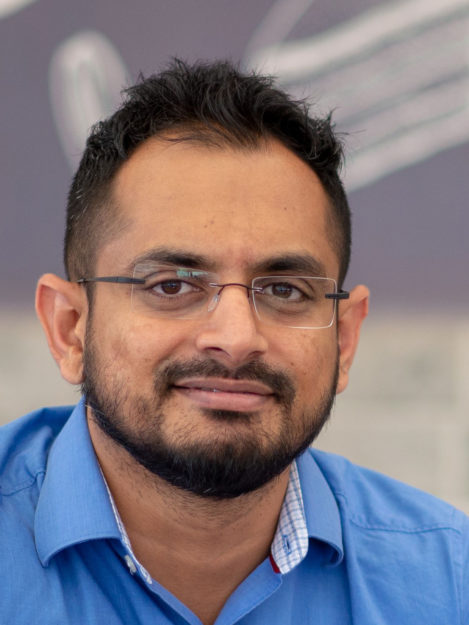
For India, a country with over 1.3 billion people and an acute shortage of doctors, artificial intelligence can’t be just a novelty but is likely to prove essential. A discussion paper floated by Indian government’s Niti Aayog places healthcare among one of the focus areas for AI intervention.
India produces only about 50,000 doctors every year–Not nearly enough to get to minimum standards. To get to the WHO recommended minimum of a doctor patient ratio of 1:1000, India will need 2.3 million doctors by 2030. Early experiments by at least a dozen healthcare startups hold some answers to push healthcare in India into the future and ease the burden on India’s healthcare system.
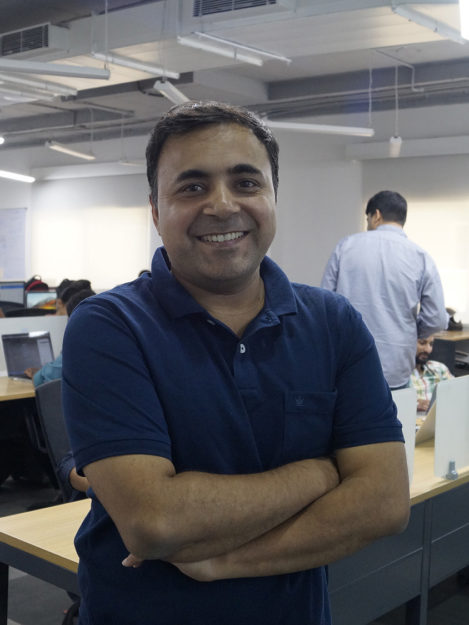
mFine, for instance, has already served users from 800 towns without a physical center. “Many doctors don’t want to practise in rural areas. But smartphones have already reached every part of the country,” says Dr Raja Indana who leads a team of more than 40 doctors at mFine.The company currently handles over 15,000 cases a month (along with doctors on its platform). That’s approximately the size of Manipal Hospital, one of the largest physical hospitals in Bangalore.
“There are literally far and few doctors in India. The technology allows you to remove barriers of distance and time. Anyone with a smartphone can connect to a doctor,” says Prasad Kompalli, CEO & co-founder of mFine.
“How many cardiologists are in India? 8000. How many gynecologists? 30,000? Are we going to train lakhs more in the next five years? Ain’t gonna happen…Technology is the only way we can solve this,” says Amit Somani, an investor in mFine. Somani’s faith in technology is cemented by some personal experiences as well. Only a week before our meeting, he avoided taking his 13-year old son to a hospital by consulting a doctor using the mFine app.
mFine, founded by former Myntra co-founder Ashutosh Lavania and entrepreneur Prasad Kompalli, currently has over 375 doctors who specialise in 20 different areas such as Gynaecology and Dermatology and serves five cities.
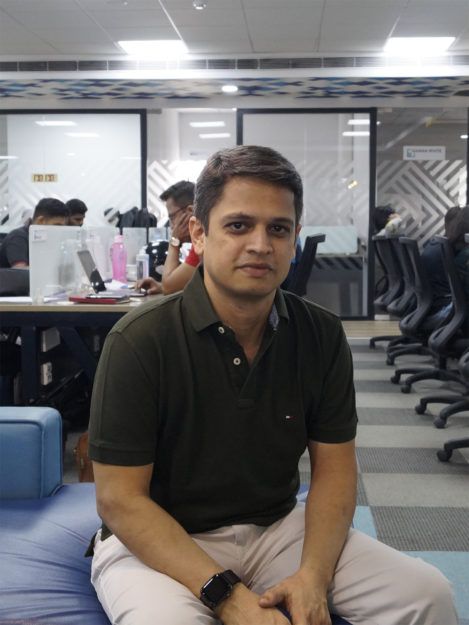
Last year FactorDaily had written about how mFine uses bots to converse and collect basic details and symptoms before handing over a case to a doctor, saving time and making room for more consultations. mFine is now working on deploying solutions that will take machine led diagnosis one step deeper than patient interactions.
“We’re trying to give our virtual doctor abilities to see and hear,” says Narayanan, formerly the chief technology officer at Myntra. Doctors will tell you that in the process of diagnosis, it is not only important to get answers from patients but also to see and hear them as to zero in on a diagnosis. For instance, by listening to someone cough, experienced doctors can tell if the patient has an upper respiratory tract infection or not.
Reading lab results and other images are important for doctors to further diagnose patients. “If a user coughs into the phone, we should be able to tell using our machine learning algorithms if it is an upper respiratory tract infection or not,” says Narayanan. “For paediatrics, we are looking at crying sounds and tell by listening to the sound of the wail,” he says. The virtual doctor can now also read results of blood tests.
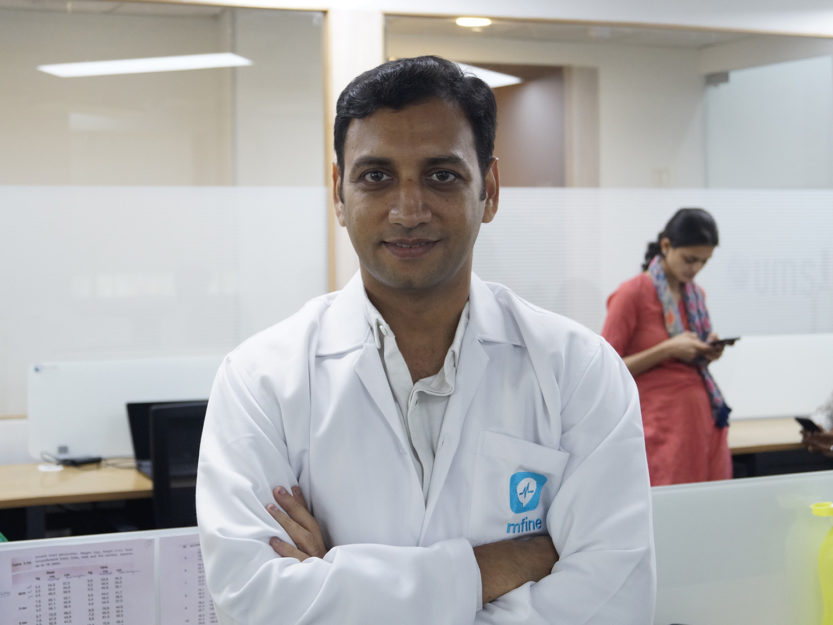
mFine is not the only company using AI to address the healthcare market. Artificial intelligence has the potential to transform healthcare in many ways. Kris Gopalakrishnan, the co-founder of Infosys and an active investor in the space says, “from analysing huge amounts of patient data, searching past histories for treatment options and efficacies, replacing specialists like radiologists, helping people (healthy people) to lead a better life with IoT devices like digital watch,” there could be many applications for AI technologies.
Since 2013, about $65 million has been raised by a dozen odd companies in the healthcare space that use AI, according to data from Tracxn. As we had written earlier, notable AI-driven healthcare startups from India include Qure.ai, which is exploring the medical imaging space; Sigtuple in pathology; CureSkin in dermatology solutions; Niramai for breast cancer detection; and Tricog Health whose cloud-connected ECG devices are used to detect heart complications. Large companies such as Google and Microsoft have also conducted pilots with hospital chains in India. Practo, an appointment booking app for patients has also been working on automating patient interactions with the use of AI.
Computer vision — an AI application which involves training algorithms on visual or image data to identify instances — is one of the commonly seen applications across the spectrum from analysing radiology reports to retina scans. Using computer vision, screening for diseases such as cancer (over 1 million incidences of cancer are found in India every year but the country has only about 2,000 pathologists experienced in Oncology) can get faster and cheaper.
Mumbai and San Mateo based Qure.ai has developed an AI-based system to assist radiologists with assessing X-rays, scans and generating reports.. The current focus of the company is on chest X-rays and head CT scans.
“Today we can identify the top 18 conditions, which cover a broad range of conditions from chest X-rays and account for nearly 95% of all chest X-rays or maybe 99% of all chest X-rays…Similarly for the head CT scan we can identify a broad range of abnormalities,” says Prashant Warier, CEO and cofounder of Qure.ai. “Our product now can be used as an automated radiology reporting tool.”
According to Warier, instead of focusing on more types of use cases, the company has decided to focus on chest X-rays and head CT-scans for now and focus on all the diseases, problems and findings in that space.
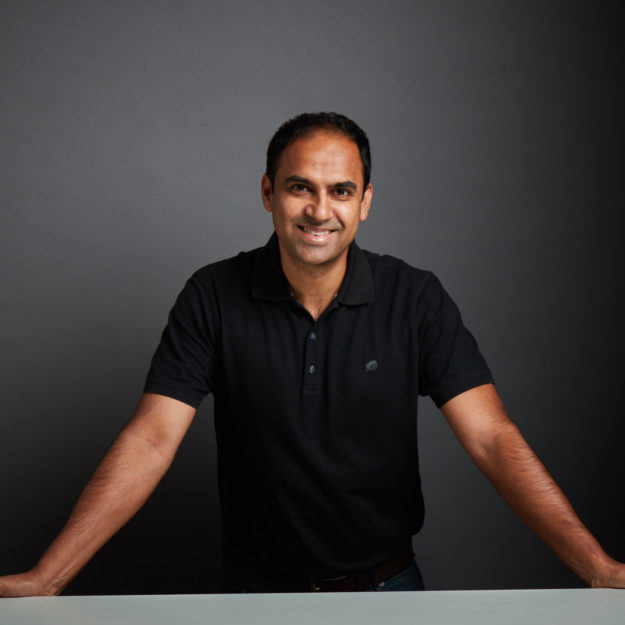
Qure.ai has currently deployed its product in over 50 locations in a dozen countries across the globe. In India, the solution is deployed in Delhi, Nagpur, Mumbai, cities in Kerala, and some districts under NITI Aayog’s Aspirational Districts programme.
Warier says that company’s product is not aimed at replacing a radiologist but instead assisting them. “What we do is help a radiologist to speed up their process and also improve their productivity and accuracy,” he adds. “There are studies which we have done which show we could be more accurate or we are most likely more accurate than a radiologist but that doesn’t mean that we can replace the radiologist.”
The company is also in the process of developing a smartphone based solution which will allow the user or doctor to take a picture of the radiology report and get a diagnosis immediately.
One of the areas the company’s product has worked well in the area of tuberculosis (TB) treatment. Warier talks about a deployment of the company’s solution in the Philippines, where the old method of identifying and tracking patients was a lot manual, time consuming and cumbersome which led to high patient fallout. “We were able to bring down the time a patient is identified as positive or not for TB from five weeks to one day. If they are positive then they can go for the Gene Expert test right away and all of this can happen in a single day instead of five weeks,” says Warier.
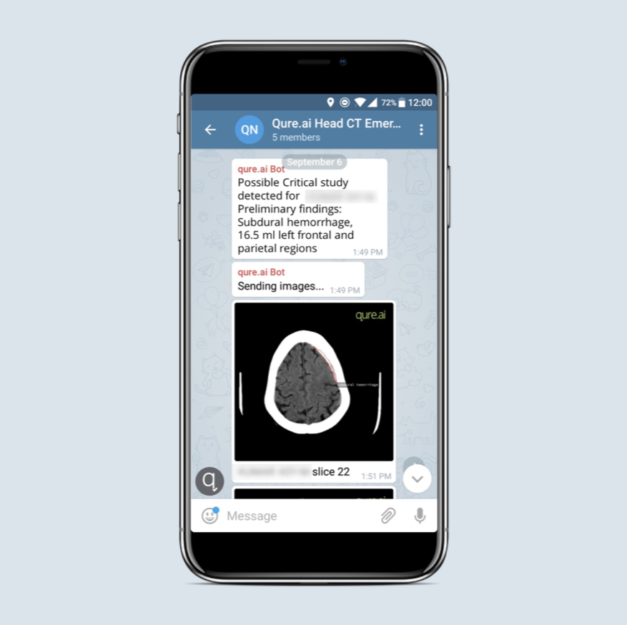
Similar solutions have also been deployed across the companies sites in India and, according to Warier, is helping with problems like long diagnosis time and lack of radiologists which indirectly lead to patient fallout.
According to him, the primary value addition that AI brings is the ability to help the economically weaker sections and the underprivileged get access to better quality healthcare.
Another startup working on an AI solution on a smartphone for public health is Hyderabad-based Docuturnal. The current focus of the company is on lung heath and its app based solution called TimBre is a tool to help with TB diagnosis with a screening test, which involves recording and analysing a person’s cough using the phone’s microphone, that rough takes around three minutes.
According to Rahul Pathri, founder and CEO of Docturnal, even though TB is the current product’s focus, in the future the company could add detection capabilities for other ailments like pneumonia, Interstitial lung disease (ILD), chronic obstructive pulmonary disease ( COPD ) etc. because it reuses the existing data collected for training the algorithm over a period of time.
“Any ailment that has cough as a symptom is what we look into. While our current focus is on TB, tomorrow we can add other lung based ailments,” says Pathri.
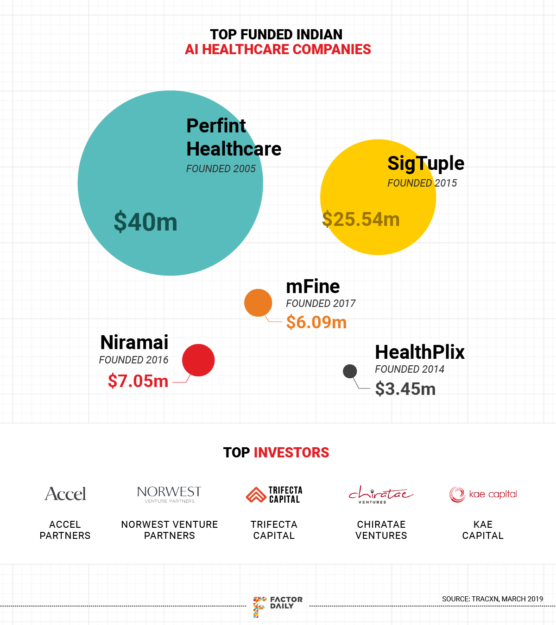
According to a 2017 study by Indian Council of Medical research, COPD was the second biggest cause of death in India. The company has already conducted over 20 clinical trial pilots across Telangana and is currently conducting one at Narayana Hrudayalaya.
“Since we are a screening provider, the doctor cannot write a prescription based on what the outcome is. What we provide is a probabilistic percentage to help identifying patients requiring confirmatory tests like Genexpert,” says Pathri. “Our sensitivity lies between 75-80% and pur specificity hovers between 90-95%.” Doctornal is also working on an API based solutions which will help integrate its product into other apps.
Manish Singhal, founding partner at AI focused venture fund Pi ventures, has a view that AI and healthcare are like a marriage made in heaven and will help bridge the skewed doctor to patient ratio in India. According to Singhal, solutions for public health require a platform-based approach and AI-based solutions can provide that.
“AI replacing doctors is not going to happen and that is what it is intended. AI, which can bring in human like perception, is an ideal middle layer to bridge the demand supply gap between patients and doctors. What is important is how you can make quality healthcare available to the masses at scale. That is what is important and AI can help with this,” says Singhal.
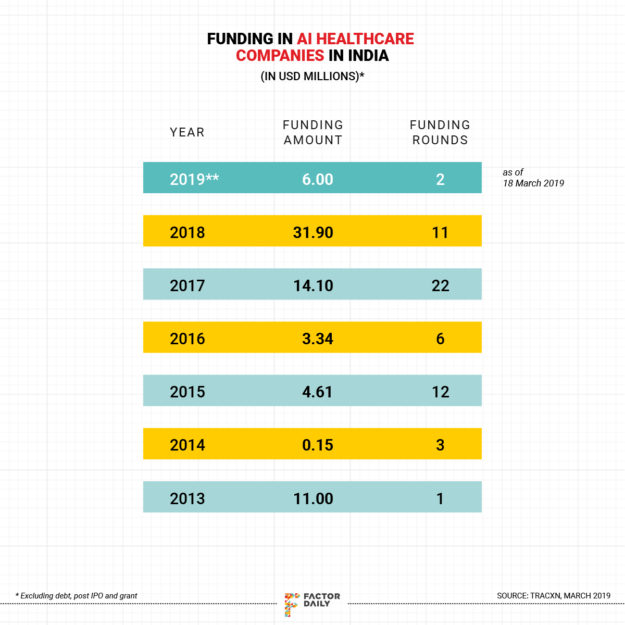
Singhal takes the example of Sigtuple*, one the companies his firm invested in. He goes on to explain that since pathology is traditionally a chemical based process, pathologists are required to check the samples before preparing the report and for this the blood samples have to be physically where the pathologist is. But in the case of Sigtuple, the blood need not be where the pathologist is, the machine can be in a remote location and the pathologists can be anywhere else. “Pathologists are in short supply and strain of them is reduced by a solution like Sigtuple’s which also help them in attending to more tasks,” he adds.
Also see: This AI pathologist could be a life-saver for India’s ailing diagnostics sector
The benefits can be huge. “AI/ML can lower the cost of healthcare by giving the best treatment options at the lowest possible cost. Combine this with centralised patient records, the benefits are huge,” says Gopalakrishnan, who has earlier pointed out the need for secure healthcare databases that can be used to build solutions.
Indian companies have made some progress in that direction: both in embedding AI/ML capabilities into some of the diagnostic systems and treatment protocols. “But these are restricted to pilots and in high end hospitals. These are not widely used in the healthcare infrastructure,” says Gopalakrishnan who points out that more funding support is needed in the sector.
Medicine is complicated and it keeps changing. Artificial intelligence may not replace doctors in the near future. “AI can be an assistant to a doctor but it can’t replace the doctor. But it certainly can help overcome the shortage of doctors,” says Indana of mFine.